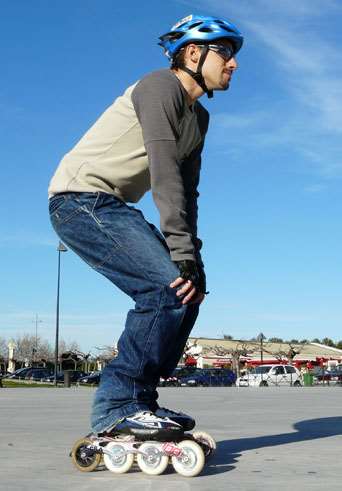Basics: the skating stance
The skating stance and movements are different from walking. In order to push well and be safe, the skater has to adopt a “basic” stance. Let’s analyse it and explain the use of it.
Par alfathor
Body Stance
It will never be repeated enough: in order to have an efficient skating push and a good skating, it is necessary to have a good basic stance. And not only is it about propulsion, but also about safety.
 Description
Description
You should be bent and relaxed. If you are too stiff, your gravity center will be too high and you will not feel comfortable: the lower the more stable.
Warning: It is the knees that bend. You can lean slightly forward but your back should remain straight.
You should align:
- Your toes
- Your knees
- Your arms
- Your shoulders
Sight
Watch in front of you in order to anticipate possible obstacles. Watching the ground too close to you or watching your feet will not give you good landmarks for your balance.
Shoulders
They are slightly leaning forward. They are relaxed so that your back is not tense and remains straight.
Arms
Slightly bent, they are directed frontwards, palms down towards the ground to be prepared in case of a fall. They should never be straight. While skating, their swinging gives you balance.
Legs
They are bents in order to better absorb the uneven ground, and to get lower – so that you are more stable.
Feet
At shoulders’ width. If they are too close, balance becomes precarious.
Tip
It is possible to lean forward a bit to be in a more dynamic stance. Moreover, if you fall, it is better to fall frontwards on your pads.
Links
Translated by Close Yr E’s

 Description
Description